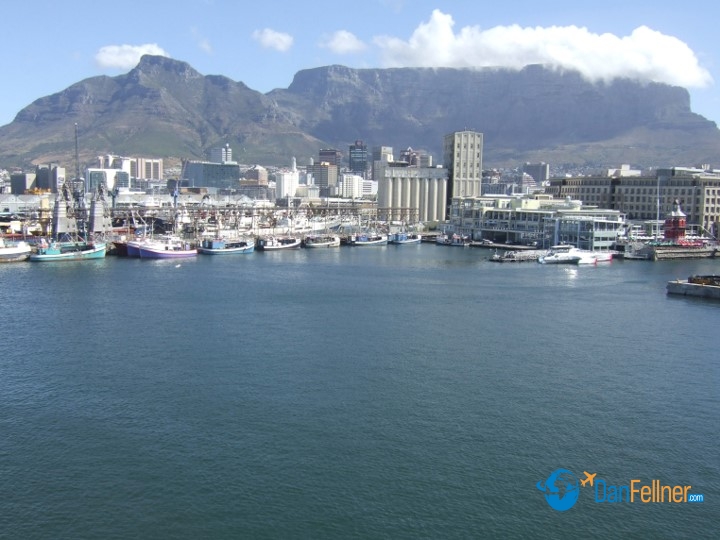Cultural sites underline contribution of influential community
The Jewish News of Greater Phoenix – February 20, 2009
CAPE TOWN, South Africa – With the dramatic flat-topped Table Mountain and Twelve Apostles mountain range looming over white-sand beaches and a stunning harbor, Cape Town, South Africa, has rightly earned a reputation as one of the most physically beautiful cities in the world.

The Twelve Apostles mountain range overlooks Cape Town’s white-sand beaches.
It’s also been a hospitable home to Jews, who arrived in waves from Europe in the late 19th century, later played a leading role in the fight against apartheid, and today give more money per capita to Israel than any other Jewish community.
I recently had the opportunity to visit Cape Town and see its Jewish sites during a 16-day cruise aboard the Silversea Silver Wind that sailed from South Africa to Kenya.
Most of the important Jewish sites, including the South African Jewish Museum, the Gardens Shul, Cape Town Holocaust Center, and Gitlin Library, are located in the same complex on an outdoor square in the heart of downtown Cape Town, just four blocks from the South African Parliament.

The South African Jewish Museum in Cape Town was dedicated by Nelson Mandela in 2000.
My first stop was the Jewish Museum, which attracts about 15,000 people a year. Visitors get a sense of the history of the Jewish community even before entering the building.
The entrance to the museum is through the exterior of the first synagogue built in South Africa, which was consecrated in 1863. Inside are the original wooden ark and mosaic floor and other artifacts from the synagogue.

The original wooden ark and mosaic floor from Cape Town’s first synagogue inside the South African Jewish Museum.
I had arranged in advance to meet Shea (pronounced She-uh) Albert, the museum’s executive director. She was kind enough to show me around and pointed out that every window in the museum has a view of Table Mountain, which is what the Jewish immigrants first saw when arriving in Cape Town by ship.
The museum depicts what life was like for those immigrants and does so with high-tech and interactive exhibits, including a bank of touch-screen computers where visitors can research their family roots.
“Other museums usually say, ‘Don’t touch,'” said Albert. “We say, ‘Please touch, please engage, please experience what the history really means.'”
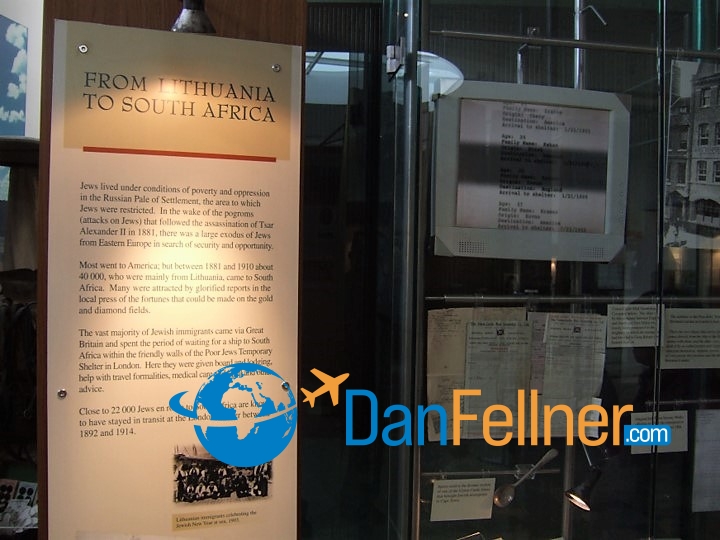
As shown in this exhibit at the South African Jewish Museum, more than 80 percent of the Jews now living in Cape Town have ancestors who emigrated from Lithuania.
I especially enjoyed a reconstructed shtetl from Riteve, Lithuania in the 1880s. Interestingly, more than 80 percent of the Jews now living in Cape Town have ancestors who emigrated from Lithuania. The shtetl exhibit features a scale model of a school, shop and modest house. Inside the home, the table is set for Shabbat dinner.
“People come to the shtetl and they actually cry sometimes because they can realize how it must have been and thereby feel closer to their grandparents,” said Albert.
The museum also showcases the role played by Jews in the struggle against apartheid, including Isie Maisels, who was Nelson Mandela’s defense lawyer during the 1963 trial that led to Mandela’s incarceration for treason, and Helen Suzman, who for many years was the sole anti-apartheid voice in the South African Parliament.
Mandela was at the museum’s opening in 2000, and there is a quote from his autobiography displayed on one of the museum’s walls: “In my experience I have found Jews to be more broad-minded than most whites on issues of race and politics, perhaps because they themselves have historically been victims of prejudice.”
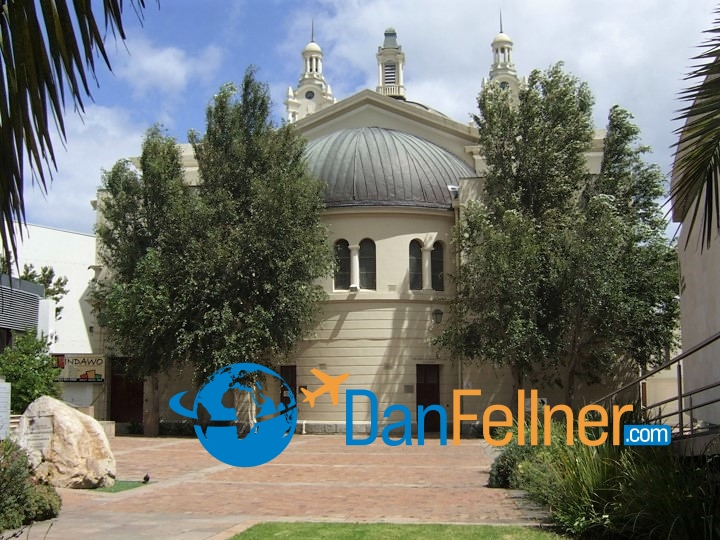
The Gardens Shul, which opened in 1905, is South Africa’s oldest active synagogue.
Next door to the museum is the Gardens Shul, also known as the Cape Town Hebrew Congregation. It opened in 1905, making it the oldest active congregation in South Africa. It can seat more than 1,400 people.
About 15,000 Jews now live in Cape Town, which has a dozen synagogues. Many of them live in an area of town called Sea Point, a suburb about 15 minutes from downtown that has numerous apartment buildings overlooking the Atlantic Ocean. I rode a tour bus through the area, which has a kosher butcher and deli.
Albert calls it “a cohesive community” that is deeply committed to the state of Israel and looking after its own sick and needy. “In that, it mirrors Jewish communities everywhere,” she said.
I also visited the Cape Town Holocaust Center, the first Holocaust museum in all of Africa. It opened to the public in 1999 (a Holocaust museum in Durban, South Africa later opened in 2008). The Nazis’ rise to power is chronicled and there are vivid displays depicting concentration camps.

Cape Town’s Holocaust Center was the first Holocaust museum in Africa.
The facility also looks at the Holocaust from a South African perspective, comparing early Nazi Germany to the racial injustice of apartheid. To its credit, the government of South Africa now requires Holocaust education in all public schools.
The last stop on my tour of Jewish sites in Cape Town was the Jacob Gitlin Library, also housed on the campus adjacent to the Jewish Museum. Gitlin, who immigrated to South Africa from Lithuania in 1902, was a leader in the South African Zionist movement.
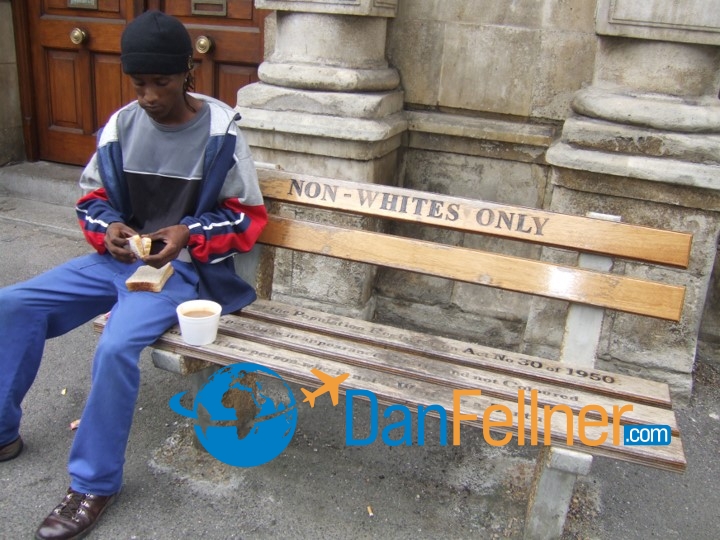
A remnant of Apartheid in downtown Cape Town, South Africa.
The library contains about 20,000 Jewish-themed books, periodicals and audio-visual material in Hebrew, Yiddish and English. The library also gives non-Jews a chance to learn about Jewish history, culture and traditions.
Once the Silver Wind departed Cape Town and sailed on to other ports in South Africa, Mozambique, Madagascar, Tanzania and Kenya, I focused on seeing animals in their natural habitats and learning more about the indigenous cultures in the region. But it wasn’t an end to my Jewish-related activities on this trip.
I was pleased that Silversea arranged Friday night Shabbat services for its passengers, providing prayer books, kippot, Shabbat candles, wine and challah. There were only about 200 passengers aboard this particular sailing, but we still had minyans on both Friday nights at sea. One of the Silver Wind’s senior officers, a Jew from Florida, prayed with our group of Americans and Brits.
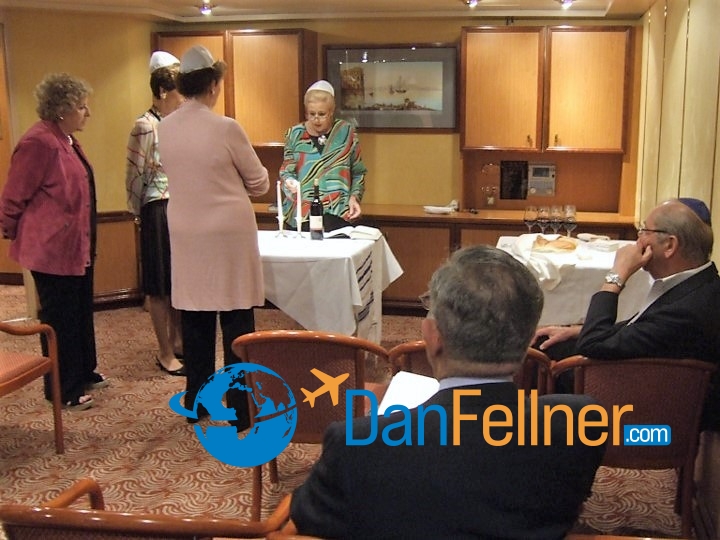
Shabbat services onboard the Silversea Silver Wind.
Indeed, I have found many cruise lines to be more than accommodating to Jewish passengers. Silversea, for instance, in addition to arranging Shabbat services, has a rabbi on board to host a Passover seder and to conduct services during the High Holidays.
“A good percentage of Silversea’s guests are Jewish,” noted Brad Ball, the company’s director of corporate communications, who was onboard our sailing.
For me, it meant a lot being able to recite familiar prayers with fellow Jews sailing the Indian Ocean off the east coast of Africa. It made the distance from home seem not quite so far.
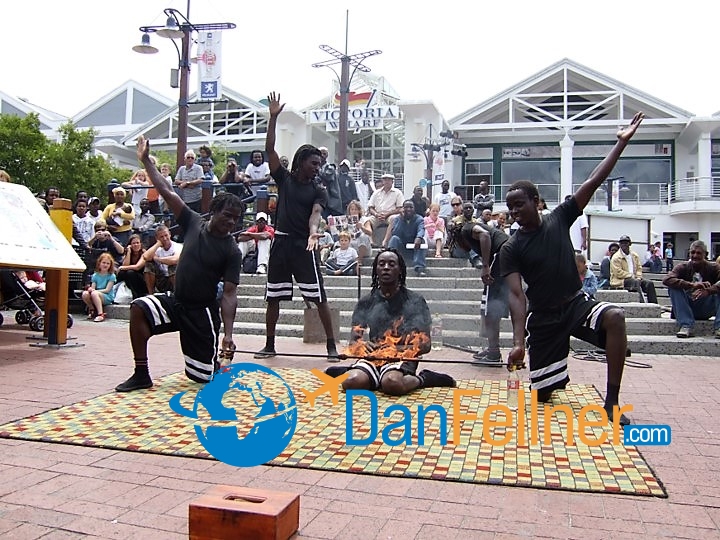
Street performers in Cape Town, South Africa.

